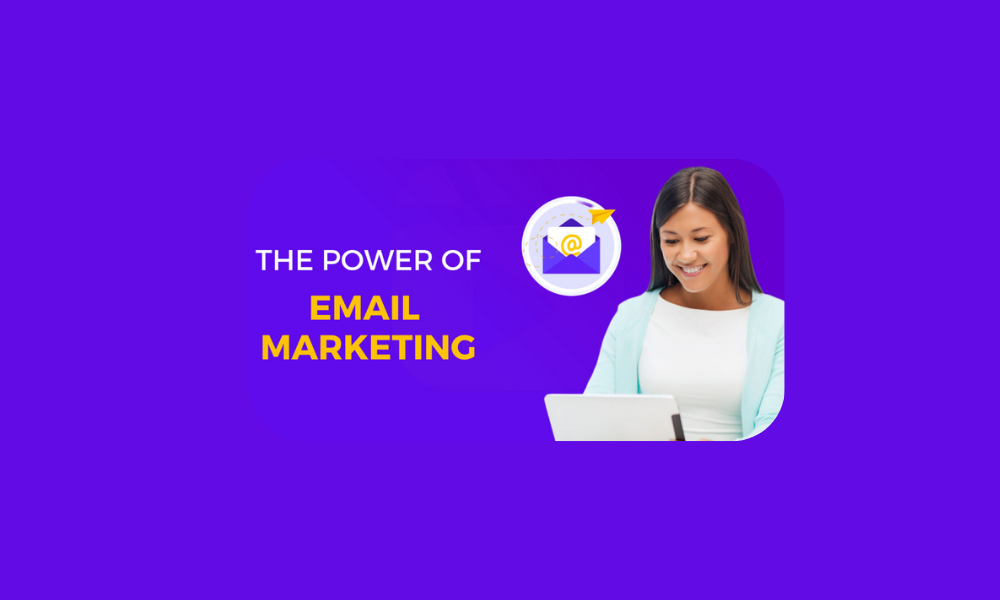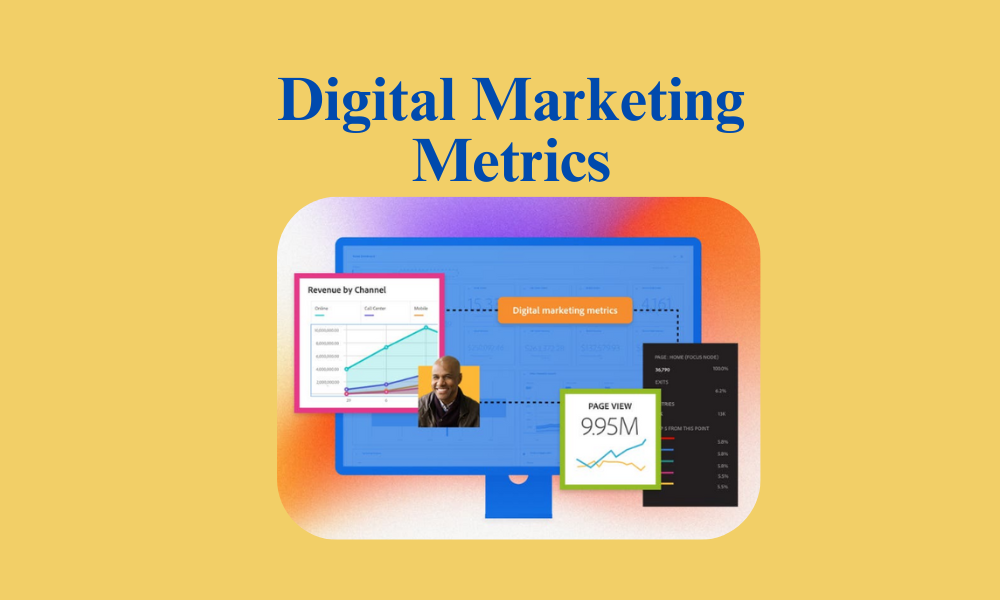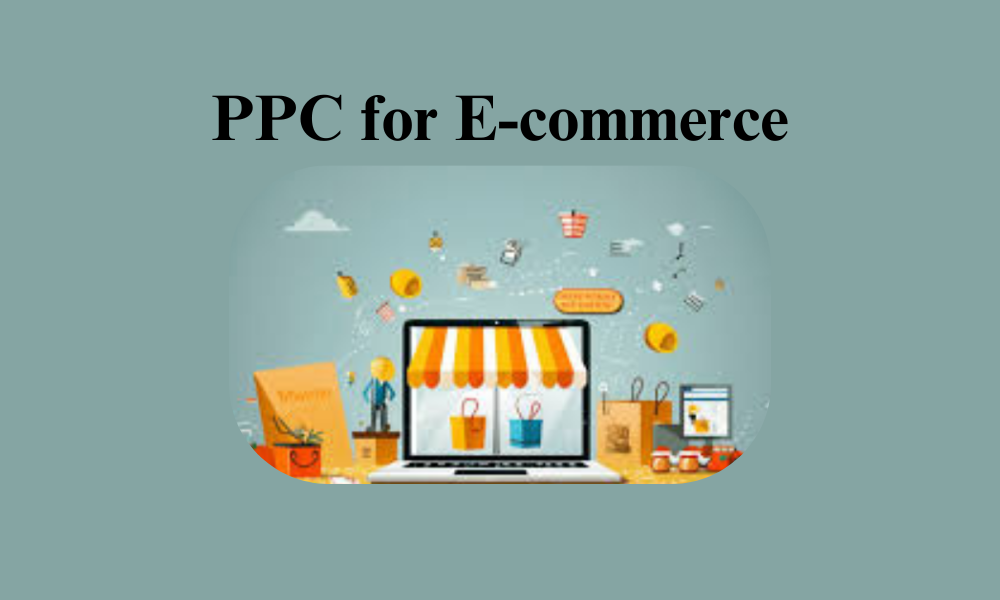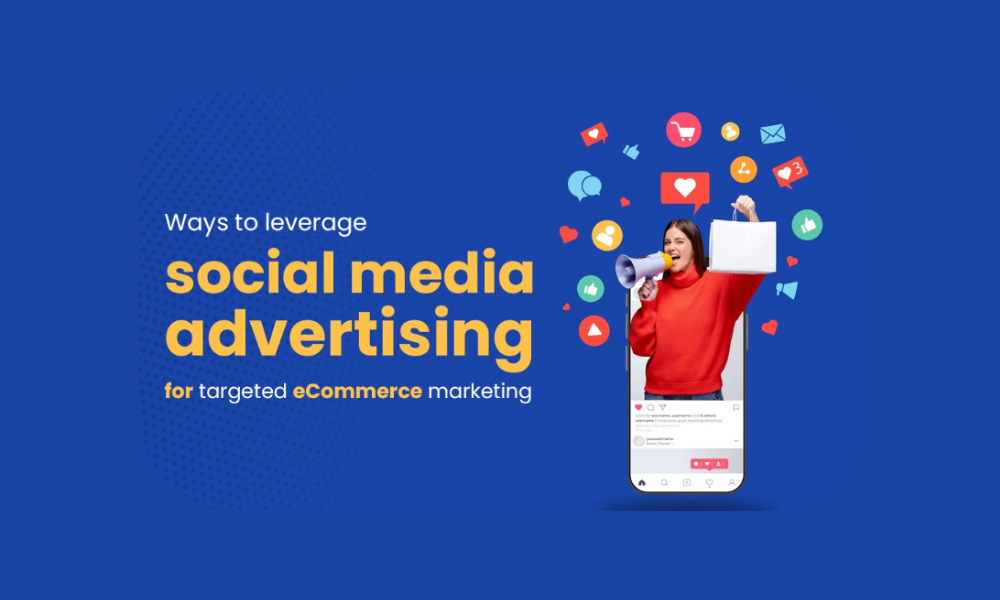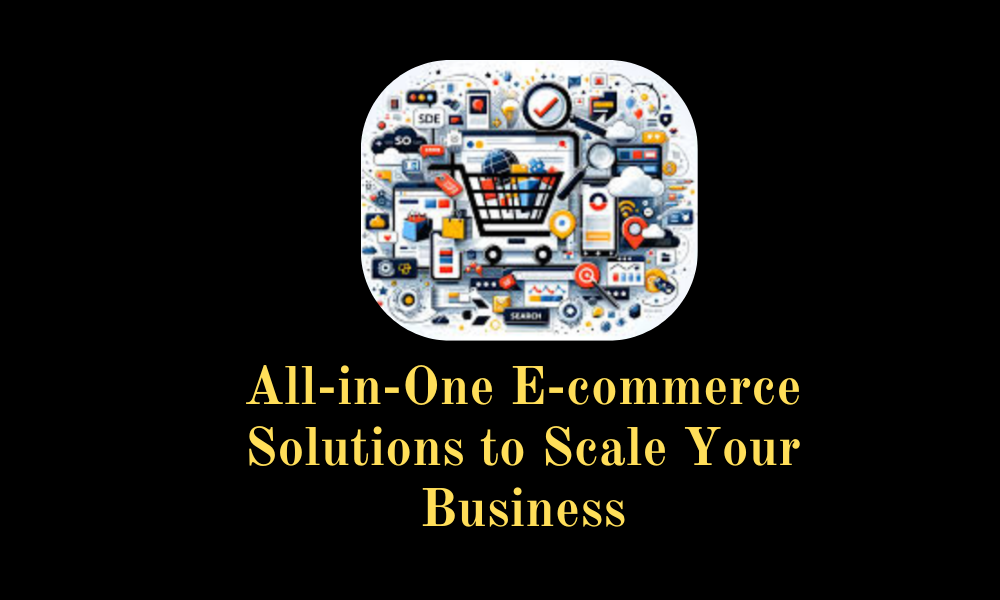Harnessing the Power of Email Marketing: Best Practices for Success
In the digital age, email marketing stands as one of the most effective tools for businesses to connect with their audience. Not only is it cost-effective, but it also provides a direct line to your customers’ inboxes. So, how can you harness the power of email marketing to ensure success? Let’s dive into the best practices.

Understanding Email Marketing
Email marketing involves sending promotional messages to a group of people via email. Its primary purpose is to build relationships, foster loyalty, and ultimately drive sales. From higher conversion rates to the ability to track and measure success, the benefits of email marketing are vast. Additionally, it allows for personalized communication, making your messages more relevant to your audience.

Building an Email List
Growing your email list is crucial for your marketing efforts. Utilize strategies such as offering valuable content in exchange for email addresses, hosting webinars, and running social media contests. Never underestimate the power of permission-based marketing.
Ensure that your subscribers have explicitly opted in to receive your emails to avoid being marked as spam and to build trust with your audience.
Segmenting Your Audience
Segmentation allows you to tailor your messages to specific groups within your audience, leading to higher engagement rates. It’s all about sending the right message to the right person at the right time.
Segment your audience based on factors such as demographics, purchase history, and engagement levels. This enables you to create highly targeted campaigns that resonate with each segment.
| Aspect | Description | Benefits |
| Demographics | Segmenting by demographics involves categorizing your audience based on age, gender, income, education, occupation, etc. | Enables personalized messaging that resonates with specific demographic groups, increasing relevance and engagement. |
| Purchase History | Analyzing past purchases to segment customers who have similar buying behaviors and preferences. | Helps in creating targeted offers and promotions that align with customers’ interests, leading to higher conversion rates. |
| Engagement Levels | Categorizing audience based on their interaction with your brand (e.g., website visits, email opens, social media activity). | Allows for sending appropriate messages based on their engagement level, such as re-engagement campaigns for inactive users. |
| Geographic Location | Segmenting by location involves grouping your audience based on their geographic area (e.g., country, city, region). | Enables location-specific marketing strategies, such as local events, region-specific offers, and time zone optimization. |
| Psychographics | Understanding and segmenting based on lifestyle, values, interests, and attitudes. | Creates deeper connections by addressing the psychological and emotional factors that drive consumer behavior. |
Crafting Engaging Content
Your subject line is the first thing recipients see, so make it count. Keep it short, intriguing, and relevant to increase open rates. Personalization goes beyond just using a subscriber’s name. Use data to send tailored content that aligns with their interests and behaviors.

· Captivating Subject Line: Your subject line is the first impression; make it compelling and concise to grab attention and boost open rates.
· Keep It Short and Intriguing: Short, intriguing subject lines are more likely to catch the reader’s eye and spark curiosity.
· Relevance Matters: Ensure the subject line is relevant to the content of your email to meet the recipients’ expectations and increase engagement.
· Beyond Personalization: Personalization involves more than just using the subscriber’s name; leverage data to customize content based on their interests and behaviors.
Balancing Promotional and Informative Content
Strike a balance between promotional and informative content to keep your audience engaged without feeling overwhelmed by constant sales pitches. With a significant number of users accessing emails on mobile devices, ensuring your emails are mobile-friendly is crucial. Use responsive design to provide a seamless experience across all devices.
Best Practices for Email Layout
Keep your layout clean and simple. Use a clear hierarchy, ample white space, and compelling visuals to enhance readability and engagement.
Automation in Email Marketing
Automation saves time and ensures consistency. It allows you to send targeted messages based on specific triggers, such as welcome emails for new subscribers or abandoned cart emails for online shoppers. Harnessing the power of email marketing through popular automation tools like Mailchimp, HubSpot, and ActiveCampaign can streamline your efforts and enhance your campaigns with various features.
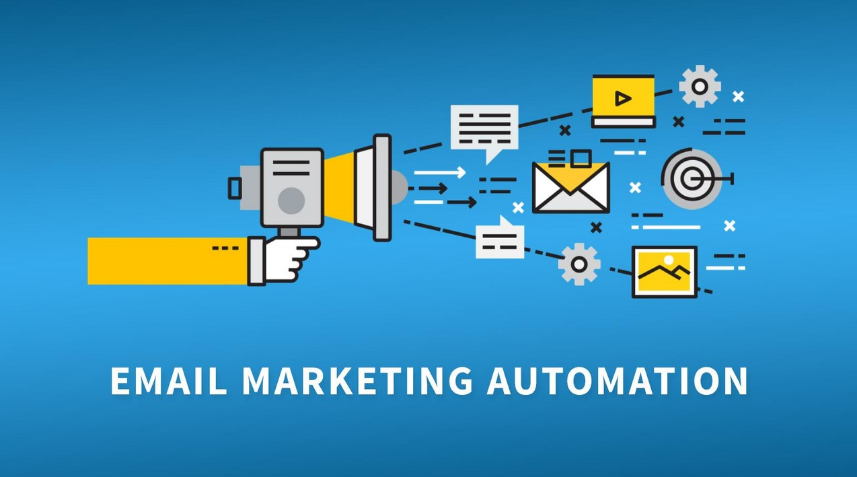
Legal Considerations
The CAN-SPAM Act sets rules for commercial emails, requiring clear identification, accurate subject lines, and an option to opt-out. Compliance is crucial to avoid hefty fines. For those marketing to EU residents, GDPR compliance is essential. Obtain explicit consent, provide easy opt-out options, and ensure data protection to stay compliant.
Conclusion
Email marketing still has power to enhance business growth when executed correctly. By following these best practices, you can boost your email marketing efforts and achieve better results. Remember to continually test, analyze, and optimize your campaigns for ongoing success.
Read more : Content is King: Creating Compelling Content that Converts
FAQs
The best time often varies, but mid-week and mid-morning are generally optimal. Testing different times can help identify what works best for your audience.
Finding the right frequency is key. It’s a balance between staying top of mind and not overwhelming your subscribers. Regular testing can help determine the ideal frequency.
Offer valuable content in exchange for email addresses, run social media contests, and host webinars to attract new subscribers.
Avoid spammy language, use a recognizable sender name, and maintain a clean email list by removing inactive subscribers regularly.

Alex Mitch
Welcome to my blog! With over 10 years in digital marketing , I’ve seen its incredible impact on smaller businesses. Join me as we explore how digital marketing can grow your audience and boost your business. Whether you’re an experienced entrepreneur or just starting out, you’ll find practical tips and insights to enhance your digital marketing strategies.
Content is King: Creating Compelling Content that Converts
Content is at the heart of digital marketing. It’s the medium through which businesses communicate with their audience, build relationships, and drive conversions. But why is content considered king? Let’s dive in.

Table of contents
Why Content is King
Content rules the digital space because it informs, entertains, and engages. It’s the foundation of SEO and the key to driving traffic and conversions. High-quality content builds trust and authority, making it indispensable for any online strategy.
Understanding Your Audience
Before creating content, you need to know who you’re writing for. Identifying your target audience is the first step. Who are they? What are their interests and pain points? Developing buyer personas helps you visualize your ideal customer. These personas should be based on real data and include demographic information, behaviors, motivations, and goals.

Tips for Writing Engaging Headlines
Use power words, numbers, and questions in your headlines. Make them concise and clear. A/B testing different headlines can also help determine what works best for your audience.
· Crafting Compelling Headlines
Your headline is the first impression. A compelling headline grabs attention and entices readers to click through. It’s crucial for driving traffic.
· Writing High-Quality Content
High-quality content is original, informative, and engaging. It should provide value to the reader and be well-researched and accurate.
· Maintaining Originality and Uniqueness
In a world filled with content, standing out is vital. Ensure your content is unique and offers a fresh perspective. Avoid plagiarism and always credit your sources.
· Balancing Informative and Engaging Content
While it’s important to be informative, your content should also be engaging. Use a conversational tone, incorporate stories, and address the reader directly to keep them interested.
SEO Optimization Techniques
SEO is essential for making your content a king. It involves optimizing your content to rank higher on search engine results pages (SERPs).
Conduct thorough keyword research to find relevant terms your audience is searching for. Integrate these keywords naturally into your content, including headings and subheadings. Meta tags, including title tags and meta descriptions, play a significant role in SEO. They should be compelling and include your target keywords to improve click-through rates.

Incorporating Storytelling
Storytelling makes your content more relatable and memorable. It helps to connect with your audience on an emotional level. Use characters, a narrative arc, and vivid descriptions. Make your audience feel like they’re part of the story.

Using Calls to Action (CTAs)
CTAs guide your readers on what to do next. Whether it’s signing up for a newsletter or purchasing a product, CTAs are crucial for conversions. Make your CTAs clear, compelling, and action-oriented. Use strong verbs and create a sense of urgency or value.
Editing and Proofreading Your Content
Editing is essential to ensure clarity, accuracy, and professionalism. It helps to refine your message and improve readability. Read your content aloud, use grammar and spell-check tools, and consider having someone else review your work. Take breaks between writing and editing to gain a fresh perspective.
| Aspect | Explanation |
| Importance of Editing | Editing is essential to ensure clarity, accuracy, and professionalism. It helps to refine your message and improve readability. |
| Read Aloud | Reading your content aloud helps you catch errors and awkward phrasing that you might miss when reading silently. |
| Use Tools | Utilize grammar and spell-check tools to identify and correct mistakes. |
| Peer Review | Having someone else review your work provides a fresh perspective and can help identify issues you might have overlooked. |
| Take Breaks | Taking breaks between writing and editing allows you to return with a fresh perspective, making it easier to spot errors and improve the overall quality. |
Promoting Your Content
Social media is a powerful tool for promoting your content. Share your articles on various platforms and engage with your audience to increase visibility. Email marketing allows you to reach a targeted audience directly. Send newsletters and updates to keep your subscribers informed and engaged.
Measuring Content Performance
Track metrics such as page views, time on page, bounce rate, and conversions. These insights help you understand how your content is performing and where improvements are needed.
Use tools like Google Analytics, SEMrush, and social media analytics to measure and analyze your content’s performance.
Adapting and Improving Content
Feedback is invaluable for improving your content. Listen to your audience’s comments and suggestions and make adjustments accordingly. Keep your content fresh and relevant by regularly updating it. This can help improve your SEO and provide ongoing value to your readers.
Conclusion
Creating compelling content that converts involves understanding your audience, crafting strong headlines, writing high-quality content, optimizing for SEO, and using engaging visuals and storytelling. Remember, content is king, so promoting your content and measuring its performance are also crucial steps to ensure its success.
Read more : Digital Marketing Metrics To Success in the Digital Age
FAQs
High-quality content is original, informative, and engaging. It provides value to the reader, is well-researched, and free of errors.
SEO is critical as it helps your content rank higher in search engine results, increasing visibility and traffic.
Use power words, numbers, and questions. Keep headlines concise, clear, and compelling. A/B testing can help determine the most effective headlines.
Storytelling makes your content more relatable and memorable, helping you connect with your audience on an emotional level.

Alex Mitch
Welcome to my blog! With over 10 years in digital marketing , I’ve seen its incredible impact on smaller businesses. Join me as we explore how digital marketing can grow your audience and boost your business. Whether you’re an experienced entrepreneur or just starting out, you’ll find practical tips and insights to enhance your digital marketing strategies.
Digital Marketing Metrics To Success in the Digital Age
Every business aims to accomplish long-term success in the digital landscape. The question that arises here is how to determine success. Tracking your success is crucial in today’s rapidly evolving digital marketing era.
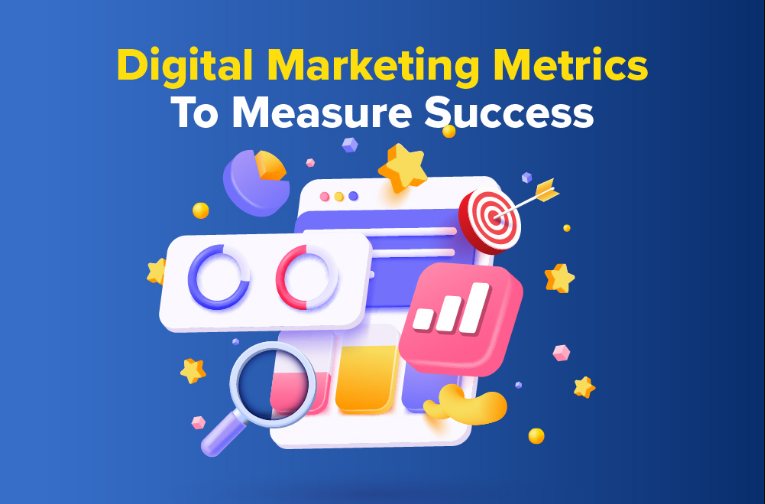
With the availability of numerous metrics, you may lose your way. This article will delve into the insights about digital marketing metrics that matter for gauging your campaign`s success.
Table of contents
What are Digital Marketing Metrics?
Digital marketing metrics are quantifiable measures used to evaluate the success and performance of digital marketing campaigns. They help marketers understand the effectiveness of their strategies, track progress, and make data-driven decisions to optimize future efforts. Here are some common digital marketing metrics:
- Website Traffic: Measures the number of visitors to a website. Key metrics include page views, unique visitors, and sessions.
- Conversion Rate: The percentage of visitors who complete a desired action, such as making a purchase or filling out a form.
- Click-Through Rate (CTR): The percentage of people who click on a link or ad out of the total who view it.
- Bounce Rate: The percentage of visitors who leave a website after viewing only one page.
- Cost Per Acquisition (CPA): The average cost to acquire a new customer through a marketing campaign.
Understanding the Importance of Digital Marketing?
Metrics have a key role in a successful marketing strategy. It is impossible for marketers to understand user’s behavior without metrics. In simple words, metrics offer detailed insights of the campaign helping marketers to make data-driven decisions.

If you are wondering what metrics are effective, you must know there are various metrics from social media to conversion rate and customer lifetime value. You can use them to evaluate the progress of your marketing campaign.
Website Traffic
Why It Matters: Website traffic is a fundamental metric that indicates the number of visitors to your site. It’s a primary indicator of your online visibility and marketing reach. Tools like Google Analytics provide detailed insights into your website traffic, including the number of visitors, page views, and sessions.
Conversion Rate
The conversion rate measures the percentage of visitors who complete a desired action, such as making a purchase or filling out a form. It directly reflects the effectiveness of your marketing efforts. Google Analytics, HubSpot, and other marketing platforms offer conversion tracking features to monitor this metric.

Bounce Rate
The bounce rate indicates the percentage of visitors who leave your site after viewing only one page. A high bounce rate may suggest issues with your site’s content, user experience, or relevance. Google Analytics provides data on bounce rates, helping you identify pages that need improvement.
Customer Acquisition Cost (CAC)
CAC measures the cost of acquiring a new customer. It helps businesses evaluate the efficiency of their marketing spend and strategies. Calculate CAC by dividing the total marketing costs by the number of new customers acquired during a specific period.
Customer Lifetime Value (CLV)
CLV estimates the total revenue a business can expect from a single customer account throughout their relationship with the company. It helps in understanding the long-term value of customers. Use historical purchase data and customer behavior analytics to calculate CLV.
Social Media Engagement

Engagement metrics (likes, shares, comments) reflect how well your content resonates with your audience on social media platforms. Each social media platform provides analytics tools to measure engagement. Additionally, tools like Hootsuite and Sprout Social aggregate this data for easier analysis.
Improvement Through Metric-Driven Innovation
Metrics are vital for transforming data into strategic insights that drive decision-making and maximize ROI. To stay ahead in digital marketing, continuous improvement through metric-driven innovation is essential. Instead of relying solely on past successes, companies must:
- Constantly analyze and optimize their metrics to remain competitive in a rapidly evolving market.
- Embrace new technologies such as artificial intelligence and machine learning to fully harness the potential of metric analysis.
By continuously improving and innovating through metrics, companies can:
- Differentiate themselves from competitors.
- Achieve long-term success in the digital age.
Conclusion
Tracking and analyzing digital marketing metrics is essential for understanding the effectiveness of your marketing strategies and making data-driven decisions. By focusing on key metrics like website traffic, conversion rates, bounce rates, CAC, CLV, social media engagement, email open rates, and ROI, businesses can optimize their marketing efforts and achieve greater success in the digital age.
Read more : The Ultimate Guide to Social Media Marketing Success
FAQs
Digital marketing metrics are measurable values that help businesses track the performance of their marketing efforts and make data-driven decisions.
Tracking metrics allows businesses to understand the effectiveness of their marketing campaigns, optimize strategies, and improve ROI.
Google Analytics, HubSpot, Mailchimp, Hootsuite, and Sprout Social are popular tools for tracking various digital marketing metrics.
Regular analysis is recommended. Depending on the metric, you might review some daily (e.g., website traffic) and others monthly or quarterly (e.g., CAC and CLV).

Alex Mitch
Welcome to my blog! With over 10 years in digital marketing , I’ve seen its incredible impact on smaller businesses. Join me as we explore how digital marketing can grow your audience and boost your business. Whether you’re an experienced entrepreneur or just starting out, you’ll find practical tips and insights to enhance your digital marketing strategies.
The Ultimate Guide to Social Media Marketing Success
Social media has become an indispensable part of modern marketing strategies, offering unparalleled opportunities to connect with audiences, build brand awareness, and drive business growth. In this comprehensive guide, we delve into the strategies and tactics that can lead to social media marketing success.

Table of contents
Social Media Marketing
Social media marketing refers to the use of social media platforms to promote products or services, engage with customers, and build brand identity. Its importance lies in its ability to reach a wide audience, facilitate direct communication, and create interactive experiences.
Over the years, social media platforms have evolved from mere networking sites to powerful marketing tools, shaping consumer behavior and influencing purchasing decisions.
Setting Goals for Social Media Marketing

Before diving into social media campaigns, it’s crucial to define clear objectives and set SMART goals (Specific, Measurable, Achievable, Relevant, Time-bound). Whether the goal is to increase brand awareness, drive website traffic, generate leads, or boost sales, having a well-defined strategy will guide your efforts and measure success, ultimately leading to social media marketing success.
Understanding Your Audience
Effective social media marketing begins with understanding your target audience. Conduct market segmentation to identify different customer groups based on demographics, psychographics, and behaviors.
Create audience personas to personalize your content and tailor messages that resonate with specific segments.
Choosing the Right Social Media Platforms
Not all social media platforms are created equal. Each platform caters to different demographics and user behaviors. Understand the demographics and characteristics of users on platforms like Facebook, Instagram, Twitter, LinkedIn, TikTok, and others to choose the right channels for your marketing efforts.
Content Creation Strategies
Content is the cornerstone of social media marketing. Explore various content formats such as text, images, videos, infographics, and live streams. Develop a content calendar to plan and schedule posts that align with your goals and resonate with your audience.
Engaging Your Audience
Engagement is key to building a loyal following and fostering brand advocacy. Focus on community building by actively engaging with followers, responding to comments, messages, and reviews promptly. Encourage user-generated content and create interactive experiences to keep audiences engaged.
Social Media Advertising
While organic reach is valuable, social media advertising can amplify your reach and target specific audience segments. Understand the difference between paid campaigns and organic reach. Utilize advanced targeting options, set budgets wisely, and track campaign performance to optimize results.

| Point | Explanation |
| Difference between paid and organic | Paid campaigns involve paying to display ads or sponsored messages to a targeted audience, while organic reach refers to reaching users organically without paid promotion. |
| Advanced targeting options | Utilize tools like demographic targeting, interests, behavior, and custom audiences to reach specific segments of your audience effectively. |
| Setting budgets wisely | Allocate budgets based on campaign goals, audience size, competition, and expected ROI to maximize results within your financial constraints. |
| Tracking campaign performance | Monitor key metrics like click-through rates, conversion rates, engagement, and ROI to assess the effectiveness of your campaigns and make data-driven decisions. |
| Optimizing results | Use insights from performance tracking to make adjustments in targeting, ad creatives, messaging, and budget allocation to improve campaign performance over time. |
Analyzing and Optimizing Performance
Data-driven decisions are fundamental to social media success. Monitor key metrics such as reach, engagement, conversion rates, and ROI. Conduct A/B testing to refine strategies, experiment with different content formats, posting times, and ad creatives to continuously improve performance.
Leveraging Influencer Marketing
Influencers can be powerful allies in your social media strategy. Identify influencers relevant to your industry or niche, collaborate on campaigns, and leverage their reach and credibility to amplify your brand’s message and connect with new audiences.
Integrating social media with Overall Marketing Strategy
Social media should complement and integrate seamlessly with your overall marketing efforts. Develop cross-channel promotion strategies to amplify reach and consistency across platforms. Measure the ROI of social media initiatives and adjust strategies to align with broader marketing goals.
Conclusion
Social media marketing success requires a strategic approach, understanding your audience, creating compelling content, engaging actively, leveraging advertising and influencers, and integrating with your overall marketing strategy. By following these guidelines and continuously analyzing and optimizing performance, businesses can achieve meaningful results and drive growth through social media.
Read more : Beginner’s Guide To E-commerce Success
FAQS
Setting goals for social media marketing involves defining specific objectives that are measurable, achievable, relevant, and time-bound.
Understanding your target audience is crucial in social media marketing as it allows you to create personalized content, tailor messages that resonate with specific segments, and effectively engage with your audience to build brand loyalty.
Choosing the right social media platforms involves understanding the demographics, characteristics, and user behaviors of each Platform.
To optimize social media advertising campaigns, focus on utilizing advanced targeting options such as demographic targeting, interests, behavior, and custom audiences.

Alex Mitch
Welcome to my blog! With over 10 years in digital marketing , I’ve seen its incredible impact on smaller businesses. Join me as we explore how digital marketing can grow your audience and boost your business. Whether you’re an experienced entrepreneur or just starting out, you’ll find practical tips and insights to enhance your digital marketing strategies.
Beginner’s Guide To E-commerce Success
E-commerce has become an integral part of the modern business landscape, offering entrepreneurs unparalleled opportunities for growth and success. In this beginner’s guide, we’ll explore the essential steps and strategies to help you kickstart your e-commerce journey and achieve sustainable success.

Table of contents
E-commerce
E-commerce refers to the buying and selling of goods and services online. With the exponential growth of internet users worldwide, the e-commerce industry has witnessed tremendous growth, making it a lucrative avenue for aspiring entrepreneurs.
Setting Up Your E-commerce Business
| Step | Details |
| Market Research | Conduct thorough market research to identify potential niches and assess demand, competition, and trends. Analyze customer preferences, pain points, and buying behavior to understand market needs and opportunities. |
| Business Structure | Choose a suitable legal structure for your e-commerce business, such as sole proprietorship, partnership, LLC, or corporation, based on your goals, risk tolerance, and regulatory requirements. |
| Brand Development | Define your brand identity, including your mission statement, core values, unique selling proposition (USP), and brand positioning. Create a memorable business name, logo, and visual identity that resonate with your target audience. |
| Product Selection | Curate a compelling product or service lineup based on market demand, customer preferences, and your expertise. Source high-quality products, negotiate favorable terms with suppliers, and ensure competitive pricing. Develop a product roadmap, including product features, specifications, and variations. |
| E-commerce Platform | Choose a suitable e-commerce platform that aligns with your business needs, budget, scalability requirements, and technical capabilities. Consider factors such as website design, mobile responsiveness, payment gateways, inventory management, shipping options, and customer support features. Customize your online store to provide a seamless user experience, optimize for search engines. |
Building Your E-commerce Website

- Choosing the Right Platform: Select an e-commerce platform that suits your business needs, such as Shopify, WooCommerce, or Magento.
- Designing a User-Friendly Interface: Create a visually appealing and intuitive website design that enhances the user experience.
- Optimizing for Mobile Devices: Ensure your website is responsive and mobile-friendly to cater to users accessing it from smartphones and tablets.
Product Selection and Inventory Management
- Sourcing Products: Identify reliable suppliers or manufacturers for your products and negotiate favorable terms.
- Managing Inventory Effectively: Implement inventory management systems to track stock levels, avoid stockouts, and optimize reorder processes.
- Implementing a Pricing Strategy: Set competitive prices that reflect the value of your products while considering market trends and customer preferences.
Digital Marketing Strategies
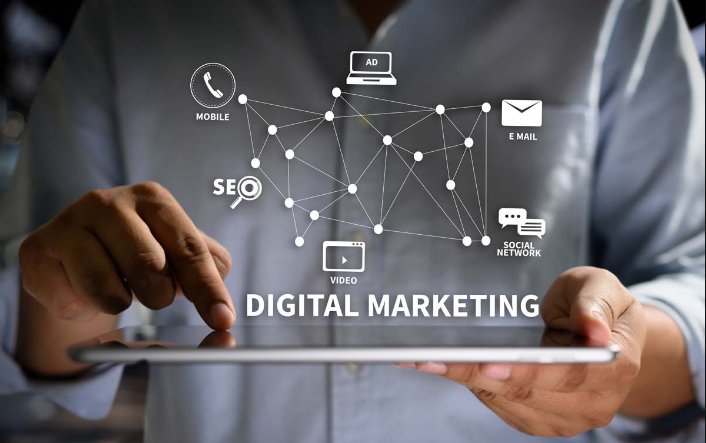
- Search Engine Optimization (SEO): Optimize your website for search engines to improve visibility and organic traffic.
- Pay-Per-Click (PPC) Advertising: Run targeted PPC campaigns on platforms like Google Ads and social media to drive immediate traffic and conversions.
- Social Media Marketing: Leverage social media platforms to engage with your audience, promote products, and build brand awareness.
Customer Experience and Support
To ensure an exceptional customer experience, it’s crucial to provide excellent customer service across various channels such as live chat, email, and phone. This responsive support system allows customers to reach out with their queries and concerns promptly, fostering a sense of trust and reliability.
Additionally, offering multiple payment options, including credit/debit cards, digital wallets, and secure payment gateways, enhances convenience for customers, making transactions seamless and hassle-free.
Another key aspect is efficiently managing returns and refunds by establishing clear policies that outline procedures and timelines. This not only ensures customer satisfaction but also reflects a commitment to resolving issues promptly and fairly. By focusing on these areas, businesses can create a positive and seamless customer journey, leading to increased loyalty and satisfaction.
Analyzing Data and Making Improvements
- Tracking Sales and Analytics: Use analytics tools to track sales, customer behavior, and website performance, gaining valuable insights for decision-making.
- Implementing Feedback Loops: Gather feedback from customers through surveys, reviews, and social media interactions to identify areas for improvement.
- Continuous Improvement Strategies: Continuously optimize your e-commerce operations based on data-driven insights and customer feedback to enhance overall performance.
Scaling Your E-commerce Business
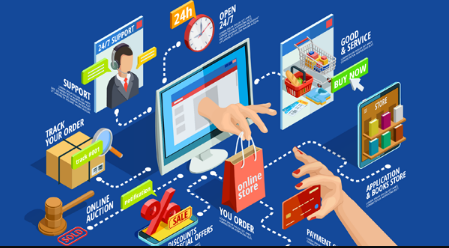
- Expanding Product Lines: Diversify your product offerings to attract a wider customer base and capitalize on emerging trends.
- Targeting New Markets: Explore new market segments and geographic regions to expand your customer reach and drive growth.
- Investing in Automation and Technology: Embrace automation tools, AI-powered solutions, and advanced technologies to streamline processes, improve efficiency, and scale operations.
Conclusion
Embarking on an e-commerce journey requires careful planning, strategic execution, and a customer-centric approach. By following the steps outlined in this guide and staying adaptable to market changes, you can build a successful e-commerce business that thrives in the digital era.
Read more : How social media Drives Real Business Results
FAQs
Consider factors such as scalability, customization options, payment gateways, and integrations when selecting an e-commerce platform.
SEO, PPC advertising, social media marketing, influencer partnerships, and email marketing are effective digital marketing strategies for e-commerce.
Customer experience plays a crucial role in e-commerce success, impacting customer loyalty, retention as well as brand reputation.
Google Analytics, Shopify Analytics, Kissmetrics, and Hotjar are popular analytics tools that provide valuable insights into e-commerce performance.

Alex Mitch
Welcome to my blog! With over 10 years in digital marketing , I’ve seen its incredible impact on smaller businesses. Join me as we explore how digital marketing can grow your audience and boost your business. Whether you’re an experienced entrepreneur or just starting out, you’ll find practical tips and insights to enhance your digital marketing strategies.
How social media Drives Real Business Results
Social media is no longer just a platform for staying connected with friends and family; it has evolved into a powerful tool for businesses to achieve real results. From increasing brand awareness to driving sales, social media is a key component of any successful marketing strategy. In this article, we will explore how social media drives real business results.

Table of contents
The Power of social media in Business
Why does social media matter so much for businesses today? The answer is simple: social media has become an integral part of our daily lives. Businesses can reach a vast audience, engage with customers in real-time, and build a loyal following. Let’s dive into the specifics of how social media impacts businesses.
Understanding Social Media Impact

The Reach of Social Media Platforms
Social media platforms like Facebook, Instagram, Twitter, LinkedIn, and TikTok have billions of active users. This extensive reach allows businesses to target potential customers globally. Secondly the sheer number of users on these platforms provides an unparalleled opportunity for businesses to increase their visibility and connect with a diverse audience.
How Social Media Shapes Consumer Behavior
Social media significantly influences consumer behavior. People often look to social media for recommendations, reviews, and inspiration. A positive social media presence can sway purchasing decisions and build trust with potential customers. Conversely, negative feedback or a lack of engagement can harm a brand’s reputation.
· Creating a Strong Online Presence
A strong online presence starts with a consistent as well as professional profile across all social media platforms. This includes using the same logo, color scheme, and tone of voice. Secondly, a cohesive brand image helps in building recognition and trust among users.
· Consistent Branding Across Platforms
Consistency is key. Ensure that your branding remains uniform across all platforms. This includes your messaging, visual elements, and overall brand voice. Consistent branding makes your business easily recognizable and further helps in establishing a strong brand identity.
· Leveraging Influencers for Brand Awareness
Influencers have the power to sway their followers’ opinions and behaviors. Partnering with influencers who align with your brand can amplify your message and reach a larger audience. Influencers can introduce your brand to their followers, who are likely to trust their recommendations.
Driving Traffic to Your Website

1. Social Media as a Traffic Driver
Social media is a powerful driver of website traffic. By sharing engaging content and using call-to-actions (CTAs), businesses can direct followers to their websites. Whether it’s a blog post, product page, or special offer, social media can generate significant traffic.
2. Effective Content Strategies
Content is king. To drive traffic, businesses need to create high-quality, relevant content that resonates with their audience. This includes blog posts, videos, infographics, and more. Sharing valuable content consistently can keep your audience engaged and encourage them to visit your website.
3. Utilizing Social Media Ads
Social media ads are a highly effective way to drive traffic. Platforms like Facebook and Instagram offer targeted advertising options that allow businesses to reach specific audiences. By investing in social media ads, businesses can significantly increase their website traffic and conversions.
Enhancing Customer Engagement
Building Relationships Through Engagement
| Point | Explanation |
| Building Relationships Through Engagement | Engagement is about building relationships. Responding to comments, messages, and mentions shows that your business values its customers. Active engagement can foster a sense of community and loyalty among your followers. By showing genuine interest in customer interactions, you build trust and long-term relationships. |
| Creating Interactive Content | Interactive content, such as polls, quizzes, and live videos, can boost engagement. This type of content encourages participation and makes your audience feel involved. The more interactive your content, the more likely your audience is to engage with it. |
| Responding to Customer Feedback | Customer feedback is invaluable. By responding to feedback, whether positive or negative, businesses can show that they care about their customers’ opinions. Addressing concerns and compliments publicly demonstrates commitment to customer satisfaction. |
| Consistency and Frequency | Consistent and frequent posting keeps your audience engaged and informed. Regular updates show that your business is active and attentive. A consistent posting schedule helps maintain interest and keeps your brand top-of-mind for your audience. It’s essential to find a balance between frequent updates and high-quality content to keep engagement high. |
Measuring Social Media Success
Key Metrics to Track
Tracking key metrics is essential for measuring social media success as well as real business results. Metrics like engagement rate, reach, impressions, and conversion rate provide insights into how well your social media strategy is performing. Regularly monitoring these metrics can help businesses make data-driven decisions.
Analyzing Data for Insights
Data analysis is the next step. By analyzing social media data, businesses can gain insights into what is working and what isn’t. This can help in refining strategies and improving overall performance.
Adjusting Strategies Based on Performance
Continuous improvement is key to social media success. Based on the data analysis, brands should adjust their strategies for real business results. This may involve changing content types, posting times, or targeting different audiences.
Conclusion

Social media is a powerful tool that can drive real business results. From building brand awareness to generating leads and improving customer service, social media offers numerous benefits for businesses of all sizes. By understanding the impact of social media and implementing effective strategies, businesses can achieve significant growth and success in today’s digital age.
Read more : Graphic Design Tips for Small Business Owners
FAQs
Small businesses can increase their visibility, engage with customers, and drive traffic to their websites through social media.
LinkedIn and Twitter are highly effective for B2B marketing due to their professional user base and networking capabilities.
The ideal posting frequency varies by platform, but consistency is key. Aim for at least a few times a week to keep your audience engaged.
Yes, social media marketing can be done on a budget by focusing on organic growth, leveraging free tools, and further creating valuable content.

Alex Mitch
Welcome to my blog! With over 10 years in digital marketing , I’ve seen its incredible impact on smaller businesses. Join me as we explore how digital marketing can grow your audience and boost your business. Whether you’re an experienced entrepreneur or just starting out, you’ll find practical tips and insights to enhance your digital marketing strategies.
Graphic Design Tips for Small Business Owners
In today’s digital age, graphic design plays a crucial role in the success of small businesses. It encompasses visual communication through images, typography, and layout to convey a message effectively. Here are five essential tips for small business owners to elevate their graphic design game and make a lasting impression on their audience.
Table of contents
What is Graphic Designing
Graphic designing is a creative process that involves visually communicating ideas, concepts, and messages through the use of typography, images, colors, and layout techniques. It encompasses various design elements such as logos, brochures, posters, websites, and other marketing materials to create visually appealing and engaging content.

Graphic designers use their artistic skills and technical knowledge to transform concepts into visually compelling designs that resonate with target audiences. They play a crucial role in brand identity development, marketing strategies, and creating memorable experiences for users across different platforms.
Understand Your Brand Identity
Before diving into graphic design, it’s vital to have a clear understanding of your brand identity. Define your brand’s values, mission, and target audience. These tips will guide you with graphic design choices, ensuring consistency across all marketing materials.

Keep it Simple and Consistent
Simplicity is a key among all the graphic design tips. Avoid cluttered layouts and excessive use of colors or fonts. Stick to a cohesive color palette and typography that reflects your brand’s personality. Consistency across your branding materials builds recognition and trust with your audience.
Prioritize Visual Hierarchy
Visual hierarchy is about arranging elements in your design to guide the viewer’s eye. Use hierarchy to emphasize important information and create a seamless flow of content. This could involve using larger fonts for headlines, contrasting colors for call-to-action buttons, or strategic placement of images.

| Aspect | Explanation |
| Visual Hierarchy | Arranging elements in the design to guide the viewer’s eye and create a seamless flow of content. |
| Emphasizing Important Information | Using hierarchy to highlight crucial details and make them stand out. |
| Larger Fonts for Headlines | Using bigger font sizes for headlines to draw attention and convey importance. |
| Contrasting Colors for CTAs | Employing colors that contrast with the background for call-to-action buttons to increase visibility and encourage interaction. |
| Strategic Placement of Images | Positioning images strategically to complement the content and enhance visual appeal. |
Use High-Quality Images and Graphics
Invest in high-quality images and graphics to enhance your designs. Blurry or pixelated visuals can detract from your brand’s professionalism. Utilize stock photos, custom illustrations, or professional photography to elevate the visual appeal of your marketing materials.
- Investment in Quality: Allocate resources to procure or create high-resolution images and graphics.
- Professional Appearance: High-quality visuals enhance the professionalism and credibility of your brand.
- Visual Appeal: Engage viewers with visually appealing elements that capture attention and convey your message effectively.
- Diverse Options: Explore a variety of sources such as stock photos, custom illustrations, or professional photography to find the right visuals for your needs.
- Consistency: Maintain consistency in image quality across your website, ads, and marketing materials for a cohesive brand identity.
- Impactful Design: Use images and graphics strategically to complement your content and guide users towards desired actions.
Optimize for Digital Platforms

In today’s digital landscape, it’s crucial to optimize your graphic designs for various platforms. Ensure your designs are mobile-friendly, considering different screen sizes and resolutions. Pay attention to file formats, optimizing images for web use without compromising quality.
In addition to mobile-friendly designs and optimizing images for different screen sizes and resolutions, it’s important to focus on responsive design principles. This means ensuring that your graphic designs adapt seamlessly across devices, providing a consistent and enjoyable user experience. Incorporating interactive elements where appropriate can also enhance engagement and usability, further optimizing your designs for digital platforms.
Conclusion
Effective graphic design is a powerful tool for small business owners to communicate their brand message, attract customers, and stand out in a competitive market. Moreover, by understanding your brand identity, keeping designs simple yet impactful, prioritizing visual hierarchy, using high-quality visuals, and optimizing for digital platforms, you can create compelling visual assets that drive business growth.
Read more : PPC for E-commerce: Best Practices to Drive Sales
FAQS
Understanding your brand identity is crucial as it guides design choices, ensuring consistency across all marketing materials. Secondly it helps convey your brand’s values, mission, and personality effectively to your target audience.
Simplicity in design avoids clutter and confusion, making it easier for your audience to understand your message. It helps maintain a cohesive and professional look while enhancing brand recognition and trust.
Visual hierarchy guides the viewer’s eye through your design as well as highlighting key information and creating a seamless flow of content. It emphasizes important details, improves readability, and further enhances user experience.
High-quality visuals enhance professionalism, credibility, and visual appeal, further attracting and engaging your audience effectively. Secondly they contribute to a cohesive brand identity, leaving a lasting impression on viewers across different platforms.

Alex Mitch
Welcome to my blog! With over 10 years in digital marketing , I’ve seen its incredible impact on smaller businesses. Join me as we explore how digital marketing can grow your audience and boost your business. Whether you’re an experienced entrepreneur or just starting out, you’ll find practical tips and insights to enhance your digital marketing strategies.
PPC for E-commerce: Best Practices to Drive Sales
PPC (Pay-Per-Click) advertising is a digital marketing strategy where advertisers pay a fee each time their ad is clicked. In E-commerce, PPC plays a crucial role in driving targeted traffic and boosting sales. This article delves into the best practices for leveraging PPC to drive sales effectively.

Table of contents
Understanding E-commerce PPC Campaigns
Successful E-commerce PPC campaigns start with clear goals, thorough audience research, and strategic keyword selection. Understanding your target audience’s preferences and behavior is essential for crafting compelling ad campaigns that resonate with potential customers.
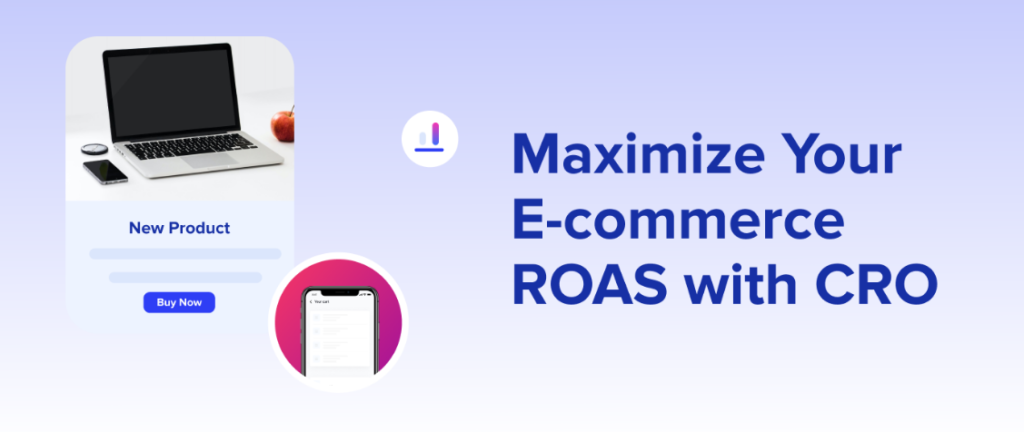
Creating Compelling Ad Copy
Crafting engaging ad copy is paramount to grabbing the attention of potential buyers. Effective headlines, persuasive ad descriptions, and utilizing ad extensions can significantly enhance the performance of your PPC ads, leading to higher click-through rates and conversions.
| Element | Explanation |
| Headlines | Effective headlines are crucial as they are the first thing users see. They should be concise, clear, and relevant to the user’s intent. |
| Ad Descriptions | Persuasive ad descriptions should highlight key benefits, unique selling points, and a strong call-to-action to encourage clicks. |
| Ad Extensions | Utilizing ad extensions like sitelinks, callouts, and structured snippets provides additional information and increases ad visibility. |
| Performance Improvement | Crafting compelling ad copy leads to higher click-through rates (CTR) and conversions, ultimately improving the overall ad performance. |
Optimizing Landing Pages for Conversions
Driving traffic to your website is just the first step. Optimizing landing pages with user-friendly designs, clear calls-to-action (CTAs), and A/B testing can improve conversion rates and maximize the ROI of your PPC campaigns.
- User-Friendly Designs: Create landing pages that are visually appealing, easy to navigate, and optimized for mobile devices. A clean layout with clear headings, relevant images, and intuitive navigation can enhance user experience.
- Clear Calls-to-Action (CTAs): Use compelling CTAs that clearly communicate the desired action, such as “Sign Up Now,” “Get Your Free Trial,” or “Shop Now.” Place CTAs strategically on the page, making them prominent and easily clickable.
- A/B Testing: Conduct A/B testing to compare different versions of your landing page and determine which elements (such as headlines, images, CTAs, or layout) perform better in terms of conversions. Use data-driven insights to optimize for higher conversion rates.
- Conversion-focused Content: Ensure that your landing page content is focused on driving conversions. Use persuasive copywriting techniques, highlight key benefits or offers, and address potential customer concerns or objections to encourage action.
Budgeting and Bid Management
Budgeting and bid management are essential components of a successful pay-per-click (PPC) campaign. Strategic budget allocation involves carefully planning and distributing resources across different ad campaigns and platforms to maximize returns on investment. This process includes analyzing historical performance data, setting clear objectives, and prioritizing high-value keywords and target audiences.

On the other hand, bid management plays a crucial role in optimizing campaign performance. It involves monitoring and adjusting bids for keywords, placements, and audiences based on real-time performance data. This dynamic approach allows advertisers to capitalize on opportunities, such as targeting high-converting keywords and adjusting bids to stay competitive in the ad auction.
Utilizing Remarketing Strategies
Remarketing allows you to re-engage with users who have previously visited your site, increasing brand recall and conversion rates. Tailoring ads specifically for remarketing audiences can yield higher returns on your advertising investment.
- Remarketing helps reconnect with past website visitors, enhancing brand recognition.
- Tailored ads for remarketing audiences boost conversion rates by targeting interested users.
- It maximizes ROI by focusing on potential customers already familiar with your brand.
- It creates personalized experiences, reinforcing your brand message and offerings.
- Remarketing strategies increase the likelihood of completing desired actions, such as purchases or sign-ups.
Tracking and Analyzing Performance
Setting up conversion tracking and analyzing campaign metrics provide valuable insights into campaign performance. Data-driven optimizations based on performance analysis are key to achieving sustained success in E-commerce PPC.
Conclusion
PPC advertising is a powerful tool for E-commerce businesses to drive targeted traffic, increase sales, and achieve marketing objectives. By implementing the best practices outlined in this article, businesses can optimize their PPC campaigns for maximum effectiveness and ROI.
Read more : How to Leverage Social Media Marketing for Powerful Social Commerce
FAQs on E-commerce PPC Best Practices:
Effective PPC ad copy includes concise and relevant headlines, persuasive ad descriptions highlighting benefits as well as a strong call-to-action, and further use of ad extensions for additional information and visibility.
Optimizing landing pages with user-friendly designs, clear CTAs, A/B testing for optimization, and conversion-focused content can further enhance conversion rates and maximize ROI from PPC campaigns.
Strategic budget allocation, based on historical data and clear objectives, along with dynamic bid management for keyword and audience targeting, is crucial for maximizing returns as well as staying competitive in ad auctions.
Remarketing helps re-engage past website visitors, increases brand recognition and conversion rates, maximizes ROI by targeting interested users, creates personalized experiences, and increases the likelihood of completing desired actions like purchases or sign-ups.

Alex Mitch
Welcome to my blog! With over 10 years in digital marketing , I’ve seen its incredible impact on smaller businesses. Join me as we explore how digital marketing can grow your audience and boost your business. Whether you’re an experienced entrepreneur or just starting out, you’ll find practical tips and insights to enhance your digital marketing strategies.
How to Leverage Social Media Marketing for Powerful Social Commerce
In today’s digital age, social media marketing has become a cornerstone for businesses looking to enhance their social commerce strategies. Leveraging social media effectively can drive traffic, boost sales, and create a loyal customer base.
This article will explore the steps to harness the power of social media marketing for impactful social commerce.

Table of contents
Understanding Social Commerce
Social commerce involves using social media platforms to promote and sell products and services. It blends social interactions and ecommerce, providing a seamless shopping experience within social networks.

With billions of active users on platforms like Facebook, Instagram, and TikTok, businesses can reach a vast audience and convert engagement into sales.
Benefits of Social Commerce
- Increased Reach: Social commerce provides access to a global audience by leveraging social media platforms. It allows businesses to connect with potential customers worldwide, breaking geographical barriers and expanding market reach significantly.
- Enhanced Engagement: Direct interaction with customers on social commerce platforms fosters deeper engagement. Businesses can engage in real-time conversations, address customer inquiries, and provide personalized recommendations.
- Data Insights: Social commerce enables businesses to gather valuable data insights into customer preferences, behaviors, and trends. By analyzing social media interactions, purchase patterns, and feedback.
- Seamless Shopping: Social commerce platforms offer a streamlined and simplified purchasing process. With integrated shopping features, such as in-app checkout, product tagging, and secure payment options, customers can make purchases directly.
- Brand Loyalty: Social commerce facilitates the creation of a loyal customer community around your brand. By engaging with customers regularly, providing personalized experiences, offering exclusive deals, and fostering user-generated content and reviews,
Steps to Leverage social media for Social Commerce

Identify the Right Platforms
Choosing the right social media platforms is crucial. Different platforms attract different demographics and user behaviors. For example:
- Facebook: Ideal for a broad audience with varied interests.
- Instagram: Perfect for visual-centric brands targeting younger audiences.
- TikTok: Best for short, engaging video content appealing to Gen Z.
Optimize Your Social Media Profiles
Ensure your social media profiles are fully optimized. This includes:
- Profile Picture: Use a high-quality logo or brand image.
- Bio: Include a compelling bio with relevant keywords.
- Contact Information: Make it easy for customers to reach you.
- Links: Add links to your website or ecommerce store.
Create Engaging Content
Creating engaging content is crucial in social media marketing, as it helps capture and further retain your audience’s attention. Diverse and engaging content can include videos like product demonstrations and behind-the-scenes looks, high-quality photos of products, and temporary posts known as stories to share promotions and updates.
Additionally, encouraging customers to share their experiences through user-generated content can significantly boost engagement and build a community around your brand.
Use Social Media Advertising
Investing in social media ads can significantly increase your reach and sales. Platforms like Facebook and Instagram offer robust advertising tools that allow you to target specific demographics. Consider the following types of ads:
| Ad Type | Description | Benefits |
| Photo Ads | Simple and effective ads featuring high-quality images. | Great for showcasing products visually. |
| Video Ads | Engaging ads that can tell a story or demonstrate product use. | Higher engagement rates. |
| Carousel Ads | Multiple images or videos in a single ad. | Showcase a range of products. |
| Stories Ads | Full-screen ads that appear between user stories. | Seamless and immersive experience. |
| Collection Ads | Combination of image and video that leads to a fast-loading instant experience. | Great for creating a mini-catalog. |
Implement Social Proof
Social proof, such as customer reviews, testimonials, and influencer endorsements, can greatly influence purchasing decisions. Secondly display positive feedback prominently on your profiles and encourage satisfied customers to share their experiences.
Utilize Shopping Features
Many social media platforms offer built-in shopping features, making it easier for users to purchase directly from your posts. Moreover Features to leverage include:
- Instagram Shopping: Tag products in your posts and stories.
- Facebook Shops: Create a dedicated shop section on your Facebook page.
- Pinterest Buyable Pins: Enable direct purchasing from Pinterest pins.
Analyze and Optimize
Regularly analyze your social media performance to understand what works best. Use analytics tools to track key metrics such as engagement rates, click-through rates, and conversion rates. Based on the data, adjust your strategy to optimize results.
Conclusion
Leveraging social media marketing for social commerce requires a strategic approach, encompassing platform selection, content creation, advertising, and data analysis. By following these steps and continually optimizing your efforts, you can harness the power of social media to drive significant growth in your ecommerce endeavors.
Read more : All-in-One E-commerce Solutions to Scale Your Business
FAQs
Social commerce involves using social media platforms to promote as well as sell products and services directly.
Platforms like Facebook, Instagram, and TikTok are highly effective for social commerce due to their large user bases and shopping features.
Use a mix of videos, images, stories, and user-generated content to further keep your audience engaged.
Social media advertising can increase reach, target specific demographics, and then boost sales with engaging ad formats.

Alex Mitch
Welcome to my blog! With over 10 years in digital marketing , I’ve seen its incredible impact on smaller businesses. Join me as we explore how digital marketing can grow your audience and boost your business. Whether you’re an experienced entrepreneur or just starting out, you’ll find practical tips and insights to enhance your digital marketing strategies.
All-in-One E-commerce Solutions to Scale Your Business
In today’s digital age, having a robust e-commerce presence is essential for businesses to thrive. E-commerce solutions offer a comprehensive suite of tools and services to help businesses sell their products and services online efficiently.

This article will devel into everything you should know about the e-commerce solutions
Table of contents
Benefits of All-in-One Ecommerce Solutions
All-in-One e-commerce solutions bring numerous benefits to businesses, including cost savings, streamlined operations, scalability, and enhanced customer experiences. These platforms integrate various functionalities like website design, payment processing, inventory management, marketing tools, and customer support, all in one place.

Key Features of All-in-One Ecommerce Platforms
- Website Builder: Easily create and customize your online store with user-friendly website builders.
- Payment Gateways: Secure payment processing integrations for seamless transactions.
- Inventory Management: Track and manage your inventory levels in real time.
- Marketing Tools: Utilize email marketing, SEO optimization, and social media integrations to reach your target audience.
- Customer Support: Provide excellent customer service with live chat, ticketing systems, and knowledge bases.
How All-in-One E-commerce Solutions Scale Your Business
By consolidating essential e-commerce functions into a single platform, all-in-one solutions simplify workflows, reduce manual tasks, and improve operational efficiency. This scalability allows businesses to handle increased sales volumes, expand product offerings, and enter new markets effortlessly.

| Benefit | Explanation |
| Simplifying Workflows | All-in-one solutions integrate multiple tools and processes, streamlining tasks and reducing complexity. |
| Reducing Manual Tasks | Automation features in these solutions eliminate manual data entry and repetitive tasks, saving time. |
| Improving Operational Efficiency | Centralized management and real-time analytics enhance decision-making and overall business performance. |
| Handling Increased Sales Volumes | Scalable infrastructure and robust features support handling higher transaction volumes without issues. |
| Expanding Product Offerings | Integrated platforms make adding new products easier, managing inventory, and updating product listings. |
| Entering New Markets Effortlessly | Features like multi-language support, global payment gateways, and localized marketing tools aid in expansion. |
Choosing the Right All-in-One E-commerce Solution
When selecting an all-in-one e-commerce platform, consider factors such as pricing, features, scalability, customization options, integrations with other business tools, and customer support. Conduct thorough research and choose a solution that aligns with your business goals and requirements.
- Pricing:
- Evaluate the cost structure, including monthly fees, transaction fees, and any additional charges for advanced features.
- Consider your budget and ensure the pricing aligns with your financial goals.
- Features:
- Look for essential features such as product management, inventory tracking, order processing, and payment gateways.
- Assess if the platform offers additional features like marketing tools, analytics, and customer relationship management(CRM) capabilities.
- Scalability:
- Determine if the platform can scale with your business as it grows, accommodating increased traffic, sales volume, and product offerings.
- Check for options to upgrade plans or add functionalities without major disruptions to your operations.
- Customization Options:
- Evaluate the platform’s customization level, including website design, branding elements, and checkout process customization.
- Ensure you can tailor the platform to match your brand identity and customer experience goals.
Implementation and Integration Challenges
While all-in-one e-commerce solutions offer many advantages, businesses may face challenges during implementation and integration with existing systems. It’s crucial to plan carefully, train employees, and ensure seamless integration to maximize the benefits of these platforms.
- Data Migration: One of the primary challenges is migrating existing data from legacy systems to the new all-in-one platform. This process requires careful planning and execution to ensure data accuracy and consistency across systems.
- Customization Needs: Businesses often have unique requirements that may not align perfectly with out-of-the-box features of all-in-one solutions. Customization needs can range from UI/UX tweaks to backend integrations, requiring skilled developers and thorough testing.
- Integration with Third-Party Tools: Many businesses rely on a range of third-party tools and services for various functions like payment processing, CRM, inventory management, and shipping. Integrating these tools seamlessly with the all-in-one platform is essential for a smooth operational workflow.
- Training and Change Management: Introducing a new e-commerce solution often requires training employees on how to use the platform effectively. Change management becomes crucial to ensure that teams adapt well to the new processes and workflows.
- Scalability and Performance: As businesses grow, scalability and performance become key concerns. All-in-one solutions must handle increasing traffic, transactions, and data volumes without compromising speed as well as the stability.
Future Trends in All-in-One Ecommerce Solutions
The future of all-in-one e-commerce solutions lies in advanced AI and machine learning capabilities, personalized customer experiences, omnichannel selling, and enhanced data analytics for better decision-making accordingly.

Conclusion
All-in-one e-commerce solutions offer a comprehensive and scalable approach for businesses looking to establish a strong online presence, streamline operations, and drive growth. Moreover, implementing them helps you to dominate the competitive digital market.
Secondly, by leveraging the right platform and implementing best practices, businesses can effectively scale their e-commerce operations and stay competitive in today’s digital landscape.
Read more : How Web Development Optimizes Your Site
FAQS
All-in-one platforms offer cost savings, streamlined operations as well as scalability, and enhanced customer experiences in one integrated solution.
These solutions simplify workflows, reduce manual tasks, improve operational efficiency, handle increased sales volumes as well as product offerings, and aid in entering new markets effortlessly.
Consider pricing structure, essential features, scalability options, customization capabilities, integrations with other tools as well as quality of customer support.
Challenges include data migration complexities, customization needs, integration with third-party tools, training requirements, and ensuring scalability as well as performance as the business grows.

Alex Mitch
Welcome to my blog! With over 10 years in digital marketing , I’ve seen its incredible impact on smaller businesses. Join me as we explore how digital marketing can grow your audience and boost your business. Whether you’re an experienced entrepreneur or just starting out, you’ll find practical tips and insights to enhance your digital marketing strategies.


